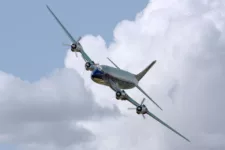Aviation Has Changed The Face Of Transit
Today it’s possible to fly from Japan to New York in just a matter of hours. If you felt so inclined, you could easily circumnavigate the world in less than a week. That’s unprecedented in recorded history. It’s not just travel that sees a substantial upgrade, either. Shipments of sensitive materials can be securely transported with swiftness and ease.
Applications of flight are numerous and expansive. They’ve additionally become an integral component of the modern human experience. But this doesn’t diminish the complication inherent to aviation. A pilot flying a plane is transporting tons of equipment through the air with a technological configuration of advancement that requires constant monitoring.
There Are No Repair Stations In The Air
You can let certain mechanical functions of a ground-borne vehicle fall by the wayside without any adverse troubles. It’s not always integral that the engine be at its highest functionality for you to drive down to the grocery store on an errand. Things aren’t quite the same in the air.
A mistake at 30,000 feet could spell the end of the airplane, which is itself an expensive investment. It could spell the end of that which the plane is hauling, and most importantly, it could mean the death of those traveling inside. It’s not like you can pull over by the side of a cloud, jump out on a wing, and fix the doohickey on the dingus.
There’s a reason preflight checks and continuous maintenance are part and parcel to modern aviation. These things keep the practice safe, and allow for the worldwide interaction, transit, and economic admixture of modernity. Additionally, such continuously scrupulous, intense maintenance measures help identify trends which require technological expansion.
From global positioning software, hardware, and implementation to instruments which have been designed for transit through heavy weather systems, aviation is responsible for quite a bit of tech innovation. What’s more, that innovation can’t be too “buggy”, as many modern computer systems end up being when initially they roll off the assembly line.
Granted, there’s a certain level of “error” which, attributable to human design, is impossible to avoid. But with aviation, this is compensated by secondary and tertiary systems designed to ensure functionality. And, before such advancements reach the mainstream, they are first funneled through experimental rigors. Experimental aircraft are constantly being developed.
Experimental Solutions Become Mainstream Eventually
Many experimental applications go on to become regular facets of modern aviation, though it’s true some don’t quite get off the runway as they should. When those solutions don’t work, they are tweaked and fixed or written off as beyond application.
All that to say this: modern components of the aviation variety are in continuous development, and by the time they hit the market are usually very safe. But even the safest systems require continuous upgrade, maintenance, and cognizant monitoring. One of the most integral areas of upkeep concerns are engine components.

Actionable Solutions
When you’re acquiring aircraft engine parts, it makes sense to go with a group like AeroInStock.com, who has “For over 40 years…been the ‘In-Stock’ choice for high quality aircraft parts.” Modern aviation has just over 100 years’ official implementation behind it. A group with four decades’ part provision experience represents exceptional reliability.
You need to have reliable aircraft parts in your machine, be it a publicly used airplane or one strictly for private applications. When you can source them from an organization with 40 years’ top-tier, trustworthy service behind them, then you have an additional level of protection against that most pernicious of realities, Murphy’s Law.








